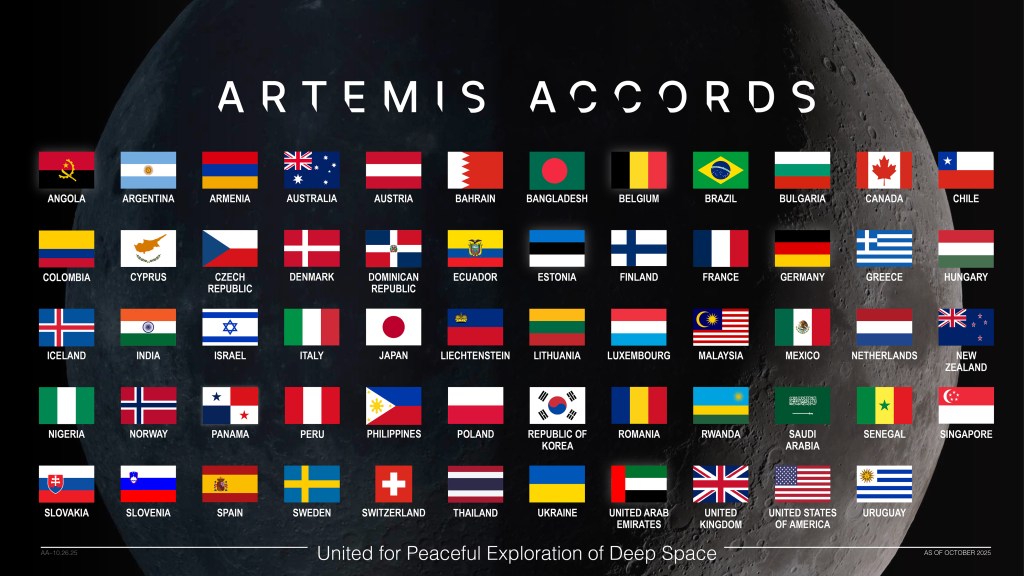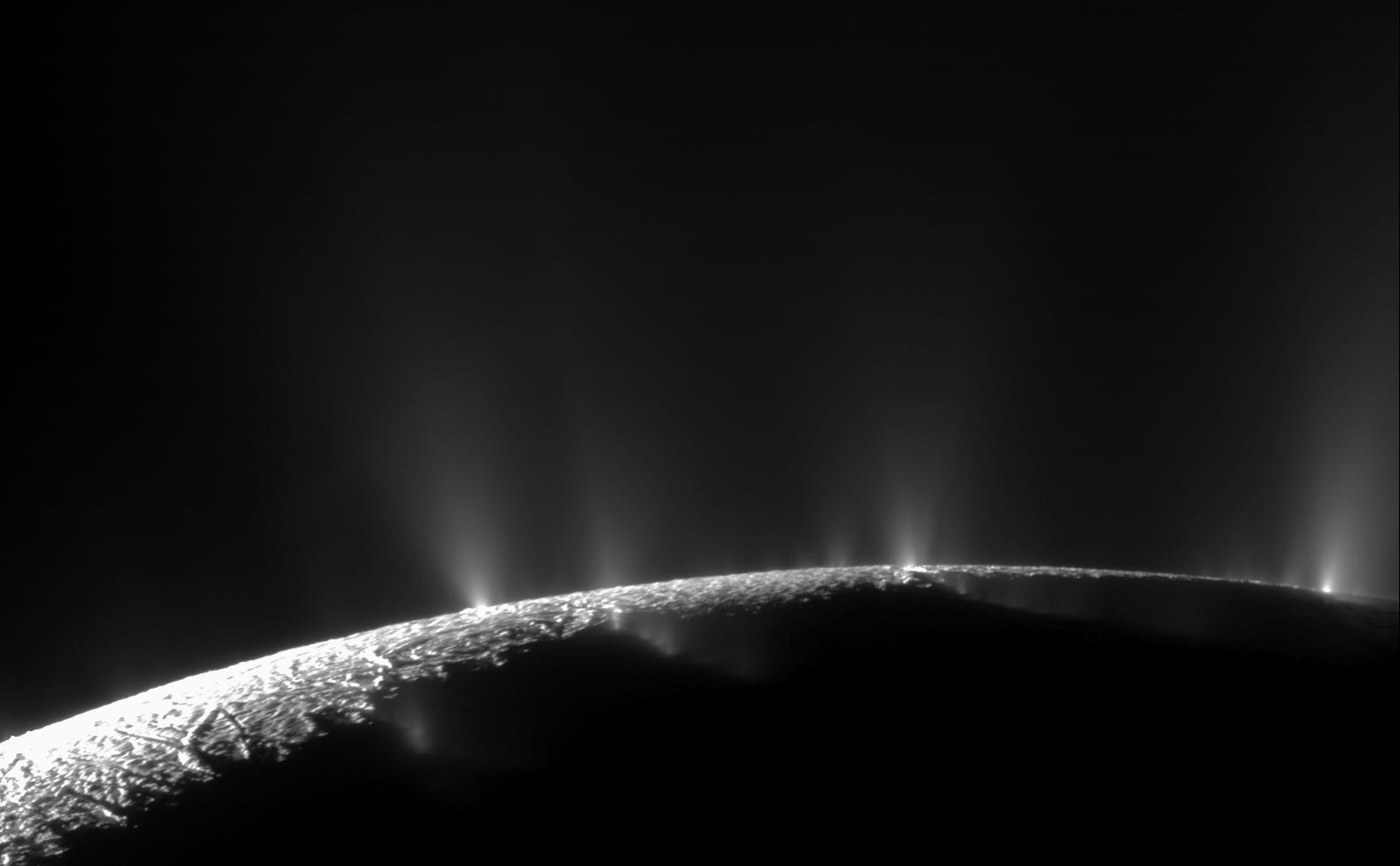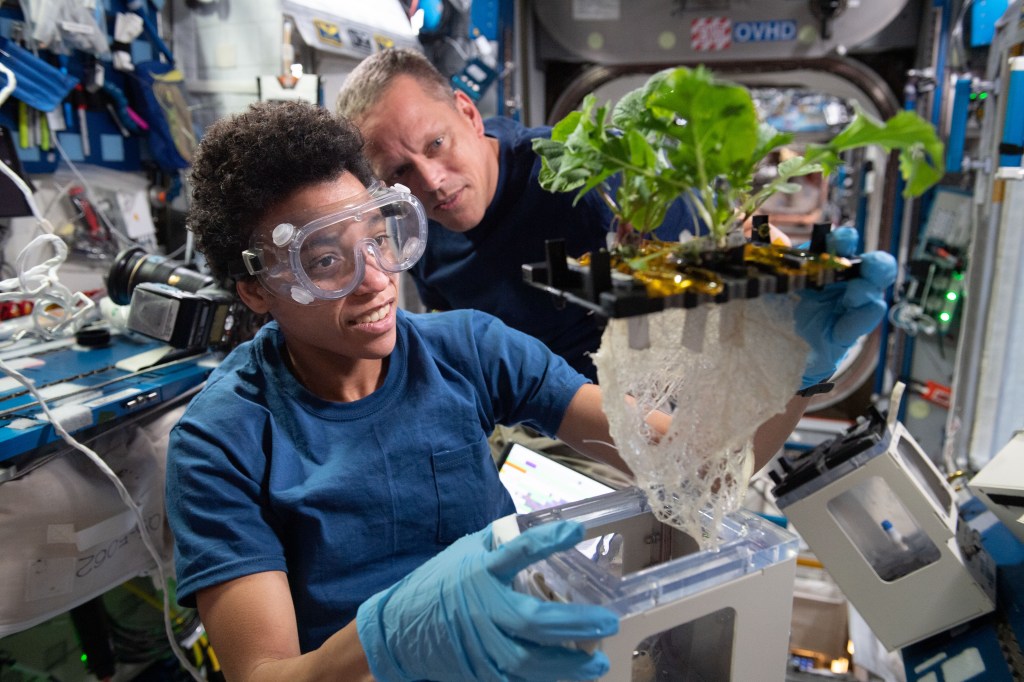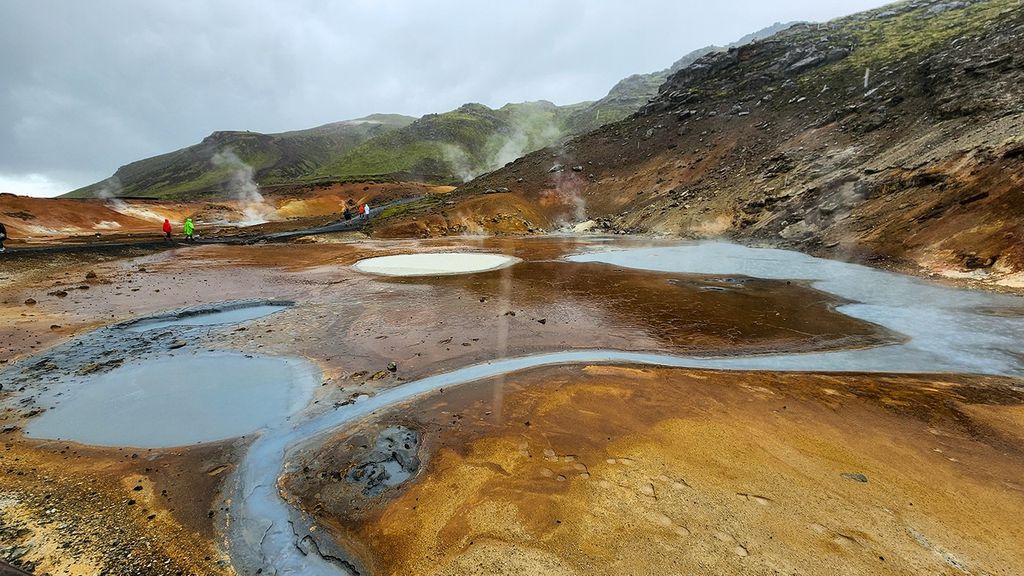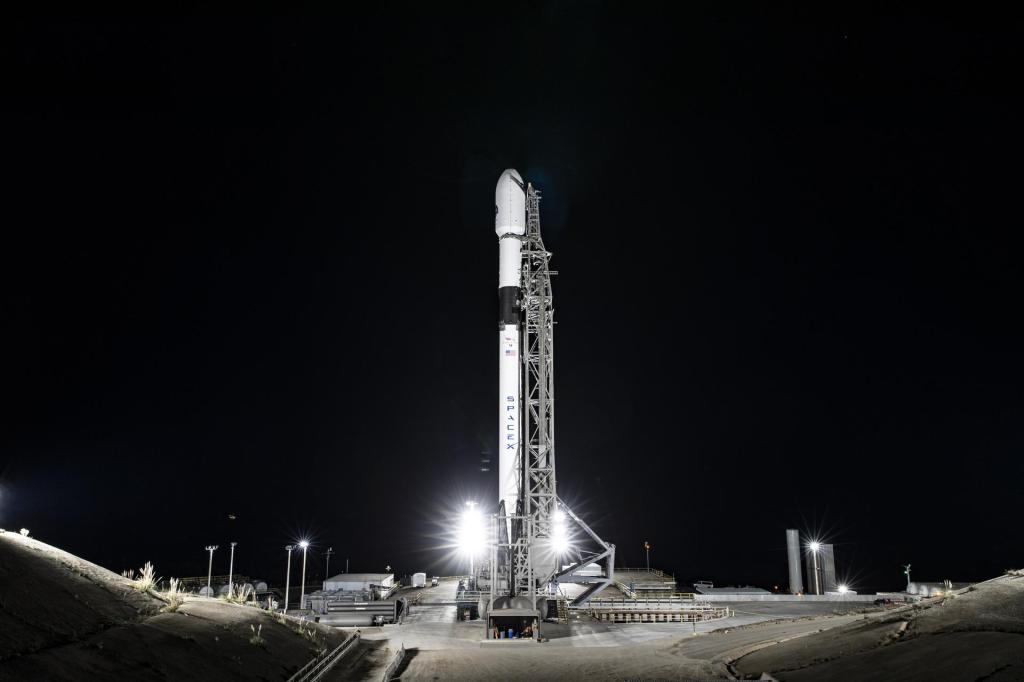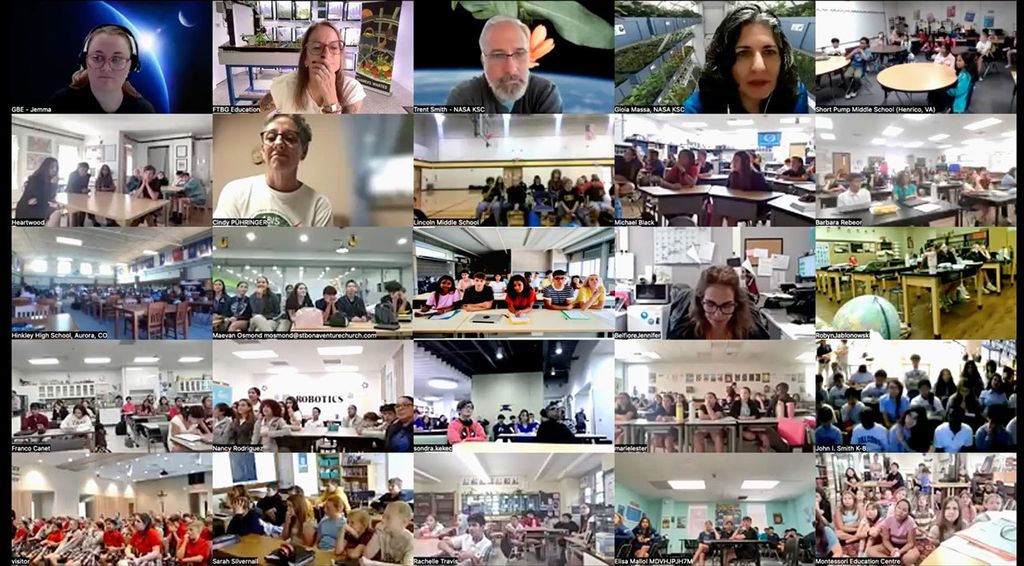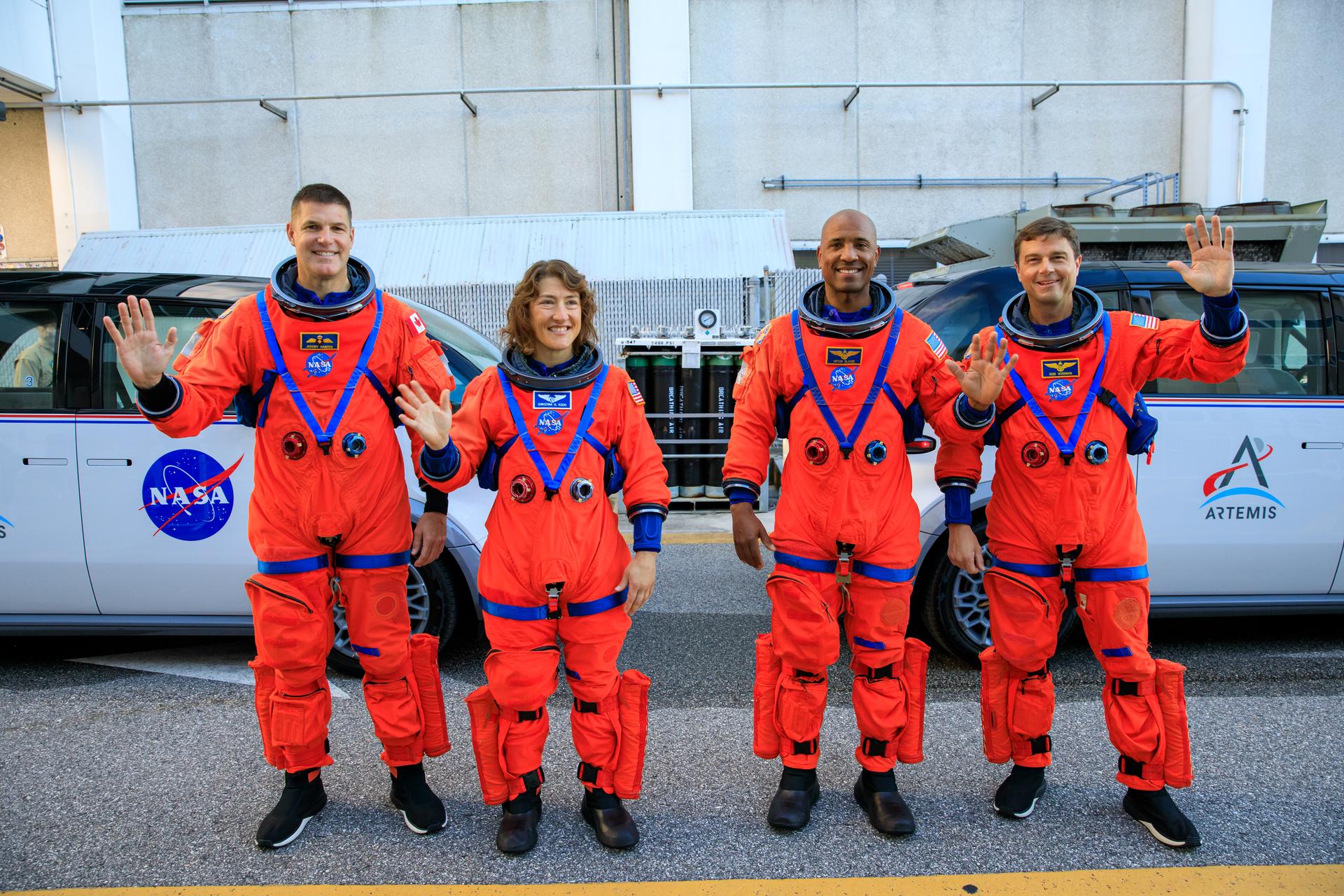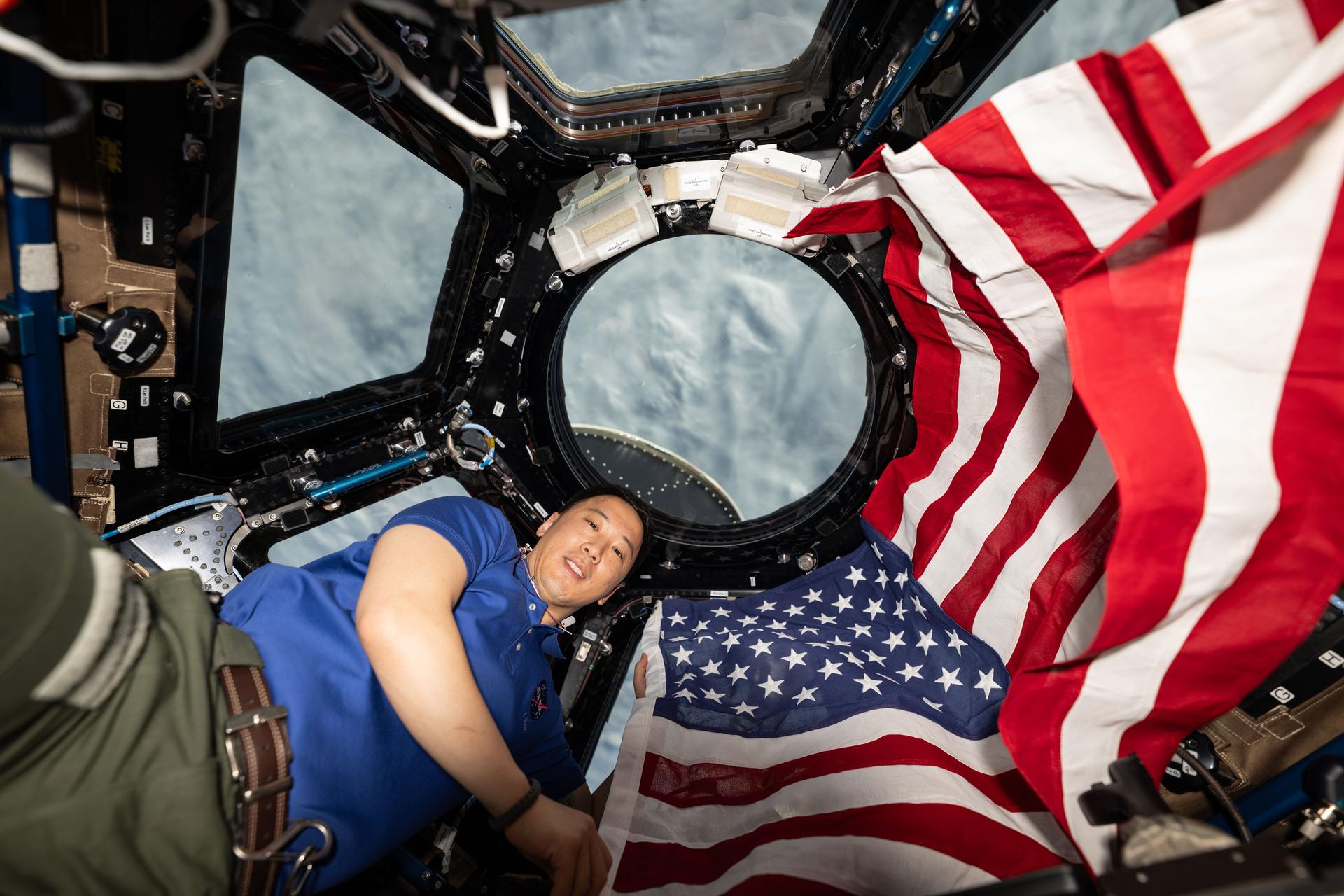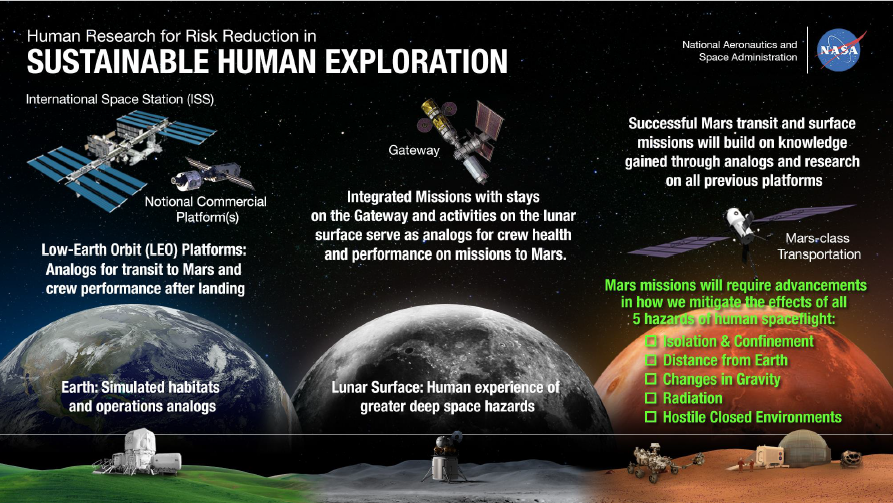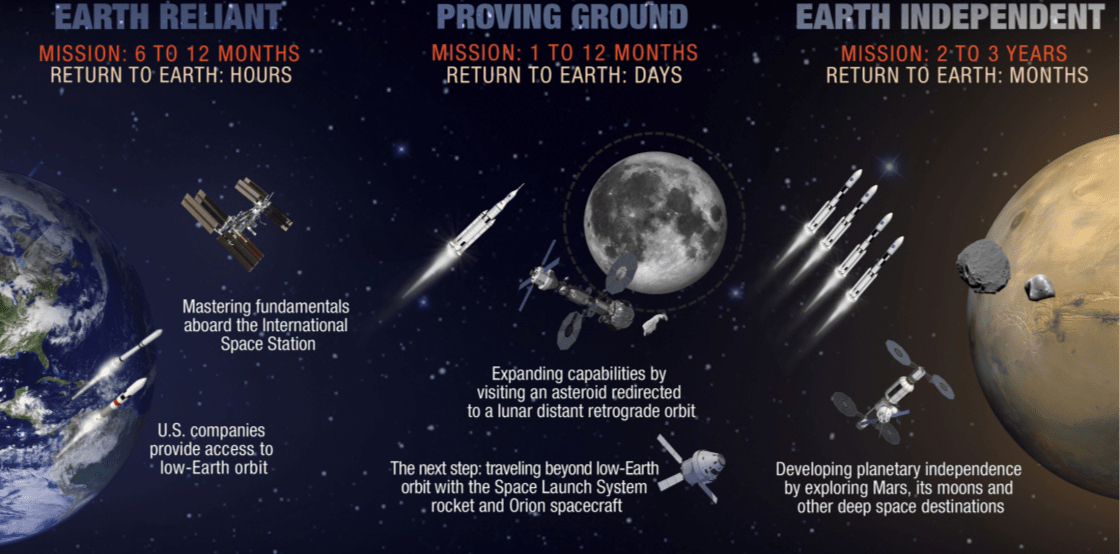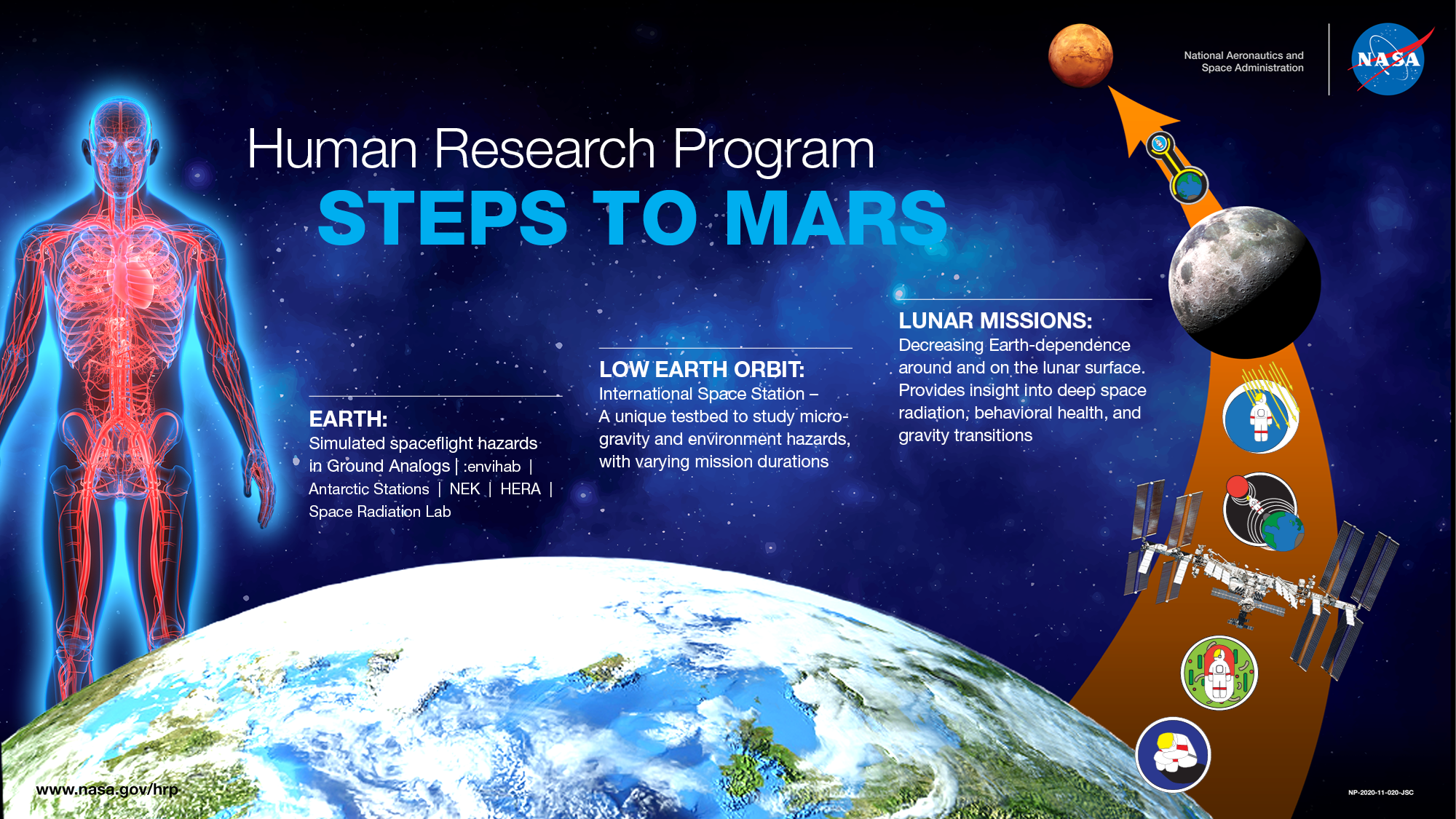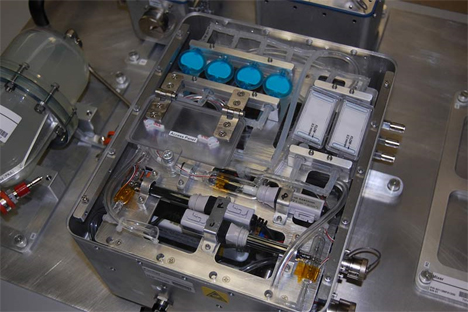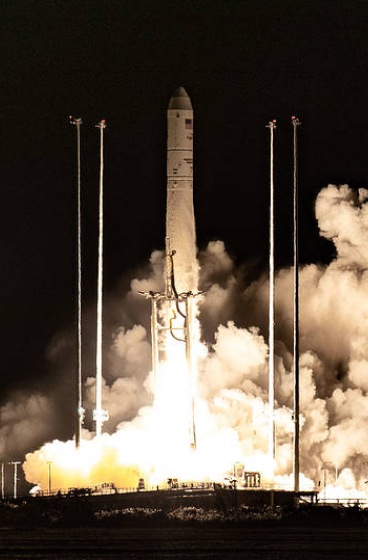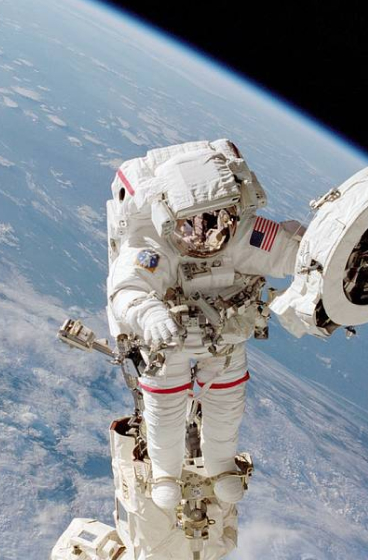About Us
Learn more about how Glenn Research Center’s unique expertise in computational modeling, and biomedical research and technology development.
Learn More about About Us
About the Human Health and Performance at GRC
GRC has been supporting human health and performance for NASA for over twenty years, starting with the Human Research Program (HRP) and continuing with Mars Campaign Office (MCO). HRP was established in 2005 at Johnson Space Center in response to NASA’s refocus of the space program on exploration. The Agency’s human research investment was redirected to investigate and mitigate the highest risks to human health and performance in support of future exploration missions. MCO’s exploration medical integrated product team works to bring a develop and assess a suite of biomedical devices to support astronaut health and performance for exploration mission.
THE MISSION of NASA’s Human Research Program is to enable space exploration beyond low Earth orbit by reducing the risks to human health and performance through a focused program of applied and operational research that leads to the development and delivery of human health, performance, and habitability standards, countermeasures and risk mitigation solutions, and advanced habitability and medical support technologies. HRP performs research and technology development to support next-generation systems that enable humans to live and work safely and effectively in space.
The Human Research Program is comprised of multiple elements that manage research and technology development tasks conducted by external and intramural NASA investigators. View more information on NASA’s Human Research Program at Johnson Space Center.
HRP has adopted a phased approach to risk reduction as humans prepare to go to Mars. These include the use of ground analogs to execute research and test hardware developed for use in space, opportunities to conduct research and technology demonstrations in low earth orbit, with the goal of utilizing lunar missions to increase earth independent operations.
How Glenn Research Center Supports HRP and MCO
NASA’s HRP and MCO leverage Glenn Research Center’s unique expertise in computational simulation, systems engineering, and microgravity fluid physics and combustion science. GRC’s Human Health and Performance (HHP) focus is not on the biology or human studies, but rather on adapting terrestrial medicine technology to the unique challenges of spaceflight. Our computational work quantifies both how the body will change due to varying gravity levels associated with spaceflight, as well as simulations to quantify human risk associated with those missions.
NASA’s HRP and MCO focus on closing risks to the crew associated with exploration missions, and GRC supports this goal by providing solutions to critical problems that place astronauts and their missions at risk. We focus on developing the technologies needed to close gaps in risks to astronaut health and performance. We use computational modeling as a primary tool for quantifying risk associated with human exploration missions, quantifying changes in the human body due to altered gravity, and determining optimal clinic layout in vehicles and habitats.
GRC has unique expertise in microgravity fluid physics, microgravity combustion science, microfluidics, sensors, diagnostics and imaging, computational simulation (deterministic and probabilistic), probabilistic risk assessment, machine learning and artificial intelligence, biomedical and biomechanical engineering models, communications and database architecture development, telescience center operations, human subject testing, and spaceflight experiment payload development. We have over 150 payloads flown on sounding rockets, Spacelab, Spacehab, MIR, and ISS. Because of our specialized, multi-discipline bioengineering experience, HRP selected GRC to lead the crew health and performance probabilistic risk assessment project and biomedical technology demonstration project. Our subject matter experts also provide guidance to the program in implementing NASA STD 7009, the NASA standard for models and simulations, and provide support for analyzing or improving the credibility of the results of computational models and simulations.
GRC’s role in HRP and MCO also extends to several hardware development projects, some of which have been, or are planned to be, demonstrated on the International Space Station or on commercial vehicle platforms. These projects include the Intravenous Fluid Generation to produce fluid for intravenous use, Exploration Lab Analysis which evaluates commercially available compact devices to perform medical analytics (examples include the HemoCue and rHEALTH ONE blood analyzer devices), Medical Consumables Tracking to track the usage of consumables used for medical treatment, a Flexible Ultrasound System for conducting a variety of ultrasound scans, and commercially available multi-functional integrated medical devices (examples include the LifeBot and Phillips Tempus devices) and portable x-ray systems. The Human Research Program partners with the Mars Campaign Office’s exploration medical integrated product team on several of these commercial medical devices.
Learn More:
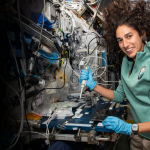
Human Research Program
HRP uses research to develop methods to protect the health and performance of astronauts in space. With the goal of traveling to Mars and beyond, HRP is using ground research facilities, the International Space Station, commercial vehicle platforms, and analog environments to enable cutting-edge science.


